What's New
Displaying results 921 - 930 of 4052
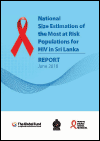
Resource | Publications,
This report describes the process and the results of the size estimation study of key populations (KPs) in Sri Lanka, which was based on the methods of the geographical mapping with enumeration and the multiplier, as well as the results of the consensus-building workshop that utilised the Delphi process to arrive at the final population size estimates (PSE). Following KPs were included in the size estimation study: female sex workers (FSWs), men who have sex with men (MSM), male sex workers (MSW), transwomen, people who inject drugs (PWID) and beach boys (BBs).
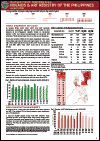
Resource | Fact Sheets,
In August 2018, there were 1,047 new HIV antibody seropositive individuals reported to the HIV/AIDS & ART Registry of the Philippines (HARP). Seventeen percent (176) had clinical manifestations of advanced HIV infection (WHO clinical stage 3 or 4) at the time of diagnosis.
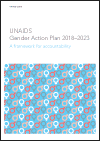
Resource | Publications,
Gender equality in the workplace is a human right and critical to the performance and effectiveness of UNAIDS. Organizations with more equal representation of women at the senior management level considerably outperform their counterparts with a lower representation of women in senior positions. Gender-balanced teams have greater potential for creativity and innovation and contribute to better outcomes in decisionmaking. The centrality of advancing gender equality, including through the achievement of gender parity, is increasingly being recognized, as signalled by the historic System-wide Strategy on Gender Parity, launched by the United Nations Secretary-General in 2017.
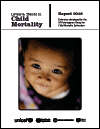
Resource | Publications,
The United Nations Interagency Group for Child Mortality Estimation (UN IGME) produces estimates of child and young adolescent mortality annually. This report presents the UN IGME’s latest estimates – up to the year 2017 – of under-five, infant, and neonatal mortality as well as mortality among children aged 5–14. It assesses progress in the reduction of child and young adolescent mortality at the country, regional and global levels, and provides an overview of the methods used to estimate the child mortality indicators mentioned above.

Resource | Publications,
Globally, half of students aged 13–15 experience peer-to-peer violence in and around school. This violence has short-term effects on their educational achievement and leaves a long-term impression on their futures. This report outlines the prevalence of violence in and around schools and highlights students’, partners’ and UNICEF efforts to #Endviolence in schools

Resource | Publications,
The 2018 United Nations General Assembly High-Level Meeting (HLM) on Tuberculosis and the current revision of the Roadmap for childhood tuberculosis together present an important moment to consolidate and advance advocacy, commitment, resource mobilization and joint efforts by all stakeholders to provide health care and address the burden of TB among children.
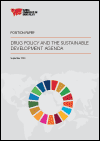
Resource | Publications,
The Sustainable Development Goals and Agenda 2030 are meant to be a transformational agenda to eradicate poverty, achieve gender equity or save the planet through their implementation. This implementation, based on coherent public policies, is still lacking at the national, regional and international levels. This is most visible in drug policy, where voices from health, human rights and science call for reform, while most countries continue to privilege ideology through law-enforcement and militarization.
The members of the Global Commission on Drug Policy draw from their experience at the highest policy and political levels to provide an analysis of how - beyond powerful words and slogans - sustainable development is impeded by drug control while providing a single, forceful recommendation to address this situation.
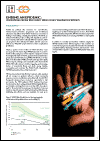
Resource | Publications,
Nearly a quarter of the world’s new HCV infections occur among people who inject drugs (PWID): lack of access to sterile needles, syringes and other injection equipment renders them highly vulnerable to HCV. Legal and structural barriers also greatly increase HCV risk among PWID. Worldwide, more than 50% of the 15.6 million PWID are HCV antibody positive. Without urgent, strategic and measurable action that includes PWID, HCV will continue to inflict a staggering, and increasing, burden of preventable illness and death among families, communities and countries.
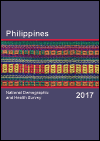
Resource | Publications,
The Philippine Statistics Authority (PSA) is presents the final report on the 2017 Philippines National Demographic and Health Survey (NDHS). The survey provides information on fertility, fertility preferences, family planning practices, childhood mortality, maternal and child health, knowledge and attitudes regarding HIV/AIDS, and violence against women. These indicators are crucial in policy-making, program planning, and monitoring and evaluation of population and health programs, including those anchored on the attainment of related Sustainable Development Goals (SDGs).
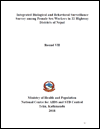
Resource | Publications,
This is the seventh round of the IBBS survey conducted among FSWs in 22 highway districrs (Jhapa, Morang, Sunsari, Saptari, Siraha, Dhanusha, Mahottari, Sarlahi, Dhading, Makwanpur, Rautahat, Bara, Parsa, Chitwan, Nawalparasi, Rupandehi, Kapilvastu, Dang, Banke, Bardiya, Kailali and Kanchanpur) of Nepal. In line with the objectives of the previous rounds of IBBS surveys, the seventh round of survey was undertaken to determine the prevalence of HIV and STIs, assess HIV and STI related risk behaviours, explore the level of awareness and understanding of HIV/STIs, record STI symptoms, account incidence of violence, as well as assess exposure to HIV intervention programs and services among FSWs in 22 highway districts of Nepal.





